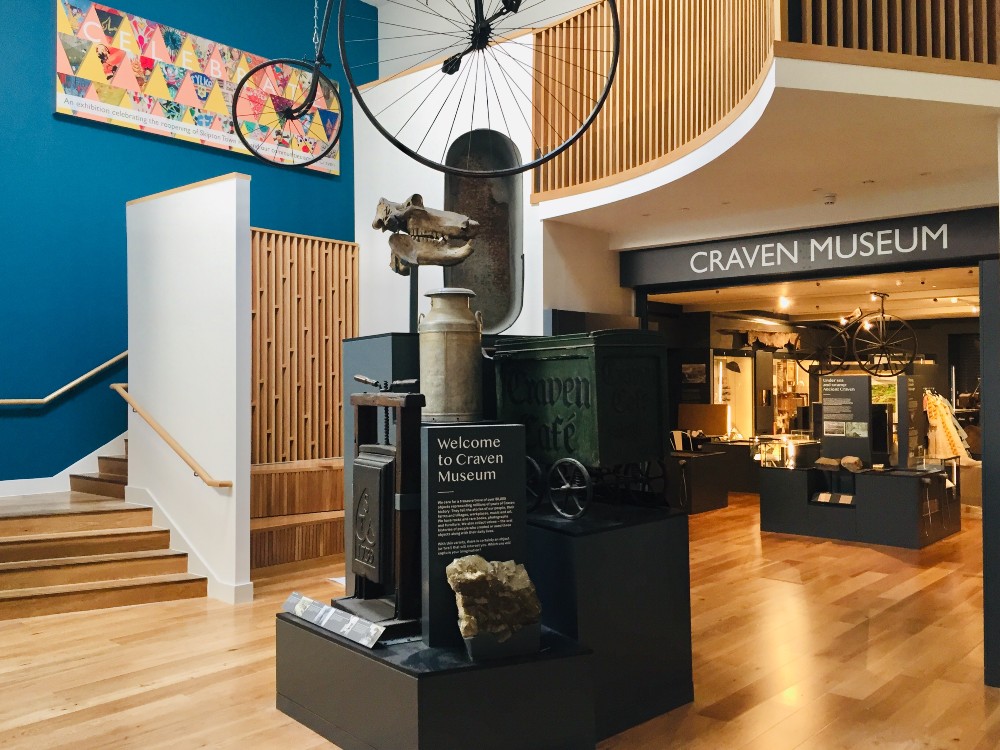A new report on accessibility information provided by UK museum and heritage sites shows no major improvements in information for blind and visually impaired, D/deaf, hard of hearing, and neurodivergent visitors in the four years since 2018.
However, there have been significant increases overall in provision of access information in the past four years.
The Heritage Access 2022 report, produced by VocalEyes, in partnership with AbilityNet, Stagetext, Autism in Museums and the Centre for Accessible Environments, highlights the importance of online access information for the UK museum and heritage sector, and tracks the changes in the state of access over the past four years.
AbilityNet consultants supported and contributed to the project via an Advisory Panel, which also included representatives from other organisations with experience and expertise in heritage and digital accessibility, data management and volunteer engagement.
 Key report findings
Key report findings
- The amount of online information about access provision at museum and heritage sites has increased significantly since 2018.
- Far smaller increases were recorded in online information relevant for blind and visually impaired people, D/deaf, deafened, and hard of hearing people, and neurodivergent people - people historically under-recognised as requiring accessibility measures.
- 19% of museums and heritage sites surveyed have no online access information in both 2018 and 2022, showing no improvement.
Digital Volunteers
Heritage Access 2022 report data was generated by a team of 61 digital volunteer researchers, who were recruited from across the UK. People with personal experience of access barriers were actively sought to take part, and the volunteers’ experience played a key role in the design of the project checklist and report guidelines.
Volunteers received training in heritage and digital accessibility before going on to assess the websites of over 3,000 museum and heritage sites, checking both the accessibility of the site and the access information that each provides to support and enable visits to their venue by D/deaf, disabled and neurodivergent people.
Download the Report
Available in Clear Print (PDF), Large Print text-only (Word) and audio (mp3) formats.
Nothing about us, without us
 Adam Tweed (pictured), Innovation Consultant for Workplace & Education at AbilityNet, comments on the report "Although the report has highlighted improvements in some areas, it has also highlighted the areas that are still needing significant improvement if we are to seek equal access for all."
Adam Tweed (pictured), Innovation Consultant for Workplace & Education at AbilityNet, comments on the report "Although the report has highlighted improvements in some areas, it has also highlighted the areas that are still needing significant improvement if we are to seek equal access for all."
“It was a real privilege for AbilityNet to be approached and to join as an advisor for this valuable research," Adam continues. "The Heritage Access 2022 report not only seeks to assess the digital accessibility of museum websites with a view to improving accessibility for disabled visitors, but the project did so in the true spirit of 'nothing about us, without us' using volunteers consisting primarily of people with lived experience of disability," says Adam.
"The quantity of sites assessed by this volunteer team and the quality of the information gathered has made this report an invaluable resource. The information gathered can to be used to assist museums with improvements that benefit both disabled and non-disabled visitors alike,” Adam says.
Joanna Wood, Chair of VocalEyes says “The D/deaf, disabled and neurodivergent people who formed the majority of the digital volunteers behind the report show the sector who they miss out on when heritage is inaccessible: no access, no visit. Let’s change that.”
Mirroring the visitor journey
Using data and best-practice examples, the Heritage Access 2022 report is structured to mirror the visitor journey, covering aspects from:
- pre-visit research such as finding and getting to a venue (such as directions, parking and step-free and level access)
- aids and facilities at the venue (such as toilets, lifts, Large Print guides, induction loops)
- downloadable resources that can be used at the venue (such as sensory maps and visual stories)
Guidance is provided for venue staff on creating and presenting access information online, covering around 40 different access aids, facilities, resources, and events.
The report also breaks down the different media types in which web content is presented, and gives clear, non-technical guidance on how to ensure that text, links, images, video, audio, and downloadable documents are all accessible. It also covers tips for inclusive communication with visitors.
Heritage Access 2022 Benchmark Tool
VocalEyes is also launching the Heritage Access 2022 benchmark tool, an online search and map interface where you can find the benchmark score for the access information provided by the 2,258 UK museums and heritage sites covered by the project.
This tool is aimed at supporting the heritage industry to identify best practice across different regions and encourage local collaboration and knowledge-sharing between heritage professionals.
Access the free tool on the VocalEyes website
Further resources
AbilityNet provides a range of free services to help disabled people and older people. If you can afford it, please donate to help us support older and disabled people through technology
